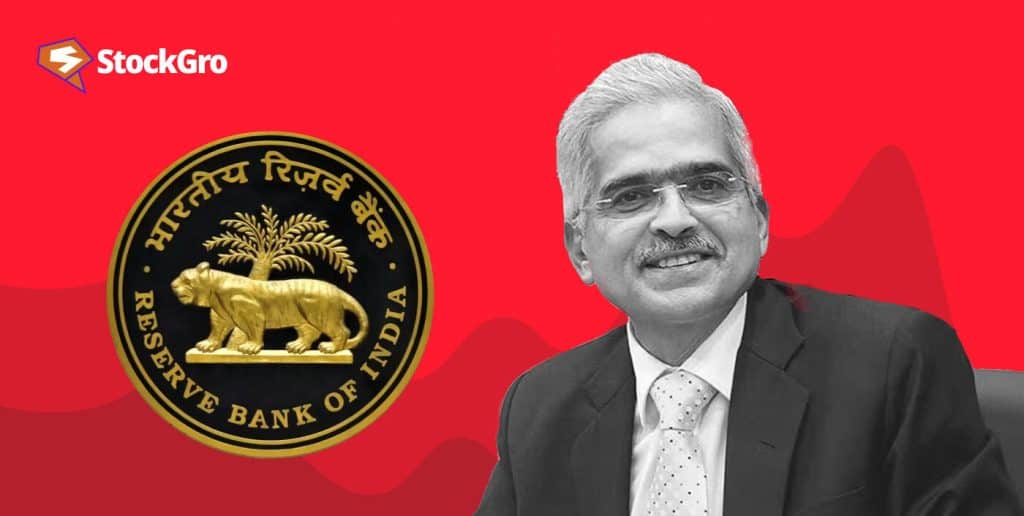
Introduction
In a move signalling cautious optimism about the Indian economy, the Reserve Bank of India’s (RBI) Monetary Policy Committee (MPC) opted to hold the key benchmark lending rate, the repo rate, at 6.5% during its latest bi-monthly meeting on June 7, 2024.
This marks the eighth consecutive time the MPC has maintained the rate, signifying a period of stability. The RBI MPC meeting dates are crucial for financial analysts and economists as they provide insights into the central bank’s policy decisions.
What other significant points emerged from the RBI’s MPC meeting? Let’s find out.
Key highlights of the meeting
The RBI MPC meeting outcome and RBI MPC meeting schedule are eagerly anticipated by investors and businesses as it outlines the central bank’s stance on interest rates and economic policy.
Here are a few important highlights of the RBI’s MPC meeting.
- Repo rate unchanged: By a majority decision of 4:2, the Monetary Policy Committee has opted to maintain the policy repo rate at 6.5%. Consequently, the standing deposit facility (SDF) rate remains at 6.25%, while both the marginal standing facility (MSF) rate and the bank rate stay unchanged at 6.75%.
Must read: Bank rate vs. Repo rate – Understanding the key differences
- Inflation: The RBI continues its commitment to stabilise inflation at 4%, which is currently around 5%. Given a normal monsoon, the expected inflation for the current fiscal year is 4.5%, with risks evenly distributed.
The quarterly breakdown of the projected CPI inflation is as follows:
| Quarter | Projected Inflation |
| Q1 | 4.9% |
| Q2 | 3.8% |
| Q3 | 4.6% |
| Q4 | 4.5% |
- GDP growth: The growth forecast for FY25 has been revised upward to 7.2% from the previous estimate of 7%. Furthermore, India’s real GDP for FY24 is reported at 8.2%.
Source: The Economic Times
The quarterly growth projections for FY25 are as follows:
| Quarter | Projected GDP Growth |
| Q1 | 7.3% |
| Q2 | 7.2% |
| Q3 | 7.3% |
| Q4 | 7.2% |
This optimism is based on the expectation of robust rural and urban consumption, driven by predictions of an above-average monsoon and a surge in service sector activity.
- Forex reserves: India’s foreign exchange reserves have reached a record high of $651.5 billion.
- Investments: With a 15.2% share in global remittances, India retains its position as the country with the highest remittance receipts. There has also been a substantial increase in Foreign Portfolio Investor (FPI) inflows during the fiscal year 2024, amounting to an impressive total of $41.6 billion.
- Food inflation: RBI Governor Shaktikanta Das has noted that while food inflation continues to be high, fuel prices are experiencing deflation.
Also read: What’s inside the RBI annual report 2023-24?
Other major announcements
Here are some other significant announcements from the RBI MPC meeting today, June 7, 2024:
- The Reserve Bank of India (RBI) intends to implement additional measures to regulate unsecured loans and advances, aiming to mitigate potential risks.
- The RBI will tackle the issue of certain regulated entities imposing fees without adequate disclosures, fostering transparency and consumer protection.
- The RBI has announced the integration of UPI Lite with the e-mandate framework, facilitating small-value digital payments.
- A digital payments intelligence platform is planned by the RBI to deter digital fraud, thereby bolstering security in online transactions.
- The RBI will update the Foreign Exchange Management Act (FEMA) guidelines related to the export-import of goods and services, which could simplify the process for businesses.
- Users of FASTag and the National Common Mobility Card can now replenish their balance using the recurring payments mechanism through the e-mandate framework, enabling automatic top-ups.
Analysis of the decisions
The Reserve Bank of India’s (RBI) decision to maintain the repo rate at 6.50% indicates a careful approach to monetary policy. This move seeks to achieve a balance between curbing inflation and pushing up economic expansion.
By leaving the current repo rate untouched, it could be inferred that the RBI aims to support ongoing momentum in real estate, which is favourable for borrowers. Moreover, this step is likely to enhance consumer sentiments.
The increase in the GDP growth prediction indicates the MPC’s belief in the robustness of the Indian economy. However, global headwinds like rising geopolitical tensions and potential slowdowns in major economies remain a risk factor.
In this regard, moving forward, RBI should continue to closely monitor the evolving economic landscape as we approach Lok Sabha elections and the Union Budget. These policies and fiscal measures will play an essential role in determining where we are going next month.
A balanced and forward-thinking approach will be essential to ensure sustained growth and stability in both the real estate sector and the broader economy.
What’s next for borrowers and investors?
People who have taken loans might continue to face high interest rates. This is because the repo rate, which directly affects the interest rates on loans, remains unchanged at 6.50%. So, the interest on existing loans stays high. New loans might have lower interest rates compared to older ones.
If the repo rate is reduced in the future, the interest rates will decrease, making the monthly instalments (EMIs) cheaper. But this won’t impact loans with fixed interest rates. As we wait for a reduction in the repo rate, the cost of borrowing might go up.
On the other hand, the interest rates on fixed deposits (FDs) might also increase as financial institutions try to attract more depositors by offering competitive rates.
This is a good time to keep an eye on the rates because financial institutions might offer higher interest on FDs to get more deposits. They do this to balance the rates they offer on loans and deposits. Consequently, it is an advantageous time for depositors to secure higher returns on their savings.
Road ahead
The Indian banking system is doing well. It is strong and can handle challenges. This is because of better quality of assets, enough capital, more provisions for bad loans, and increased profits. The non-banking financial companies (NBFCs) are also doing well, just like the banks.
In the MPC meeting, RBI stated that they might not raise their repo rate in line with the US Federal Reserve rate. RBI will keep an eye on global trends and then make decisions based on local conditions. This means that they consider the impact of policies in advanced economies on Indian markets, but their actions are mainly based on India’s growth, future outlook and inflation conditions.
Experts expect the RBI to start reducing rates from October. They think there will be two rate cuts instead of the three they had predicted earlier.
You can watch the RBI MPC meeting live to stay updated on the latest policy decisions announced in real-time during the RBI MPC meeting time.
You may also like: Reverse repo rate – everything you need to know
Conclusion
The RBI’s MPC meeting reflects a cautious yet optimistic outlook for the Indian economy. The decision to maintain the repo rate and adjust the GDP growth forecast indicates a focus on balancing inflation control with sustainable growth. Nonetheless, various challenges remain.
The MPC’s future decisions will be guided by evolving economic data, government policies, and the global economic environment. The upcoming months will be critical in determining the effectiveness of the current policy stance and India’s capacity to achieve robust and inclusive economic growth.
